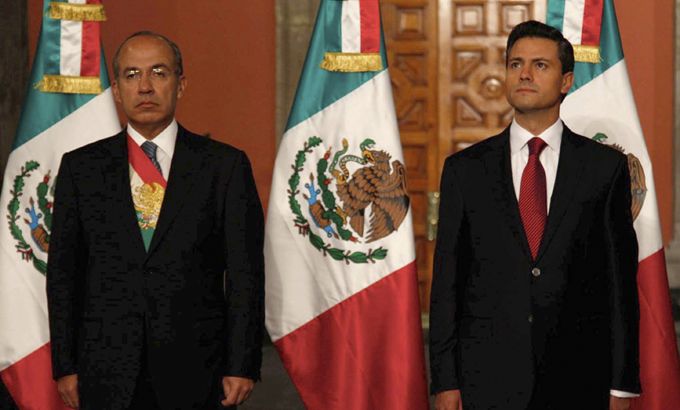
Will Mexico’s new president bring change?
As Enrique Pena Nieto assumes the presidency of Mexico, we ask what challenges he is facing.
When Enrique Pena Nieto is inaugerated in Mexico City it will mark the return to power for the Institutional Revolutionary Party (PRI). But in what condition has Felipe Calderon left the country?
|
“We are protesting against the imposition, but not against the president, but the whole system, the whole corrupt democracy that is not really hearing the citizens. Here in Mexico we don’t really feel represented by the government.“ – Rodrigo Serrano, Yo Soy 132 |
Pena Nieto has promised his government will be “modern, democratic and transparent,” in contrast to the autocracy and corruption that characterised the 71 years of PRI rule that concluded in 2000.
And for the new leader there is much to do. More than 60,000 people lost their lives over the last six years in Felipe Calderon’s ‘war on drugs’.
The US State Department currently advises Americans not to visit 19 of Mexico’s 31 states.
The Mexican economy hardly thrived under Calderon, growth rates have been sluggish and poverty rates increased while he was in power.
Since Calderon took office in December 2006, the number of people living in poverty – making less than $100 a month – rose from 43 per cent to 46 per cent.
|
“We don’t have much concern in the US but Pena Nieto’s campaign spent hundreds of millions of dollars and I would agree that the actual vote was reasonably fair. But so much money went into the mass media and in mailings and in various incentives that it was pretty much like an American election. “ – George Grayson, College of William and Mary |
The government says 2.6 million jobs were created in six years but that fell short of the estimated 6 million needed to meet the demands of a rapidly expanding population.
Calderon has argued that he had a legal and moral obligation to launch a counter attack on violent drug traffickers. He deployed federal troops against them days after he took office in December 2006.
Now some 45,000 army soldiers and 20,000 federal police officers are deployed across the country but the number of homicides has risen 36 per cent over the previous administration – at least 101,199 over the course of the six-year term in 2006. There were also 3,300 hectares of land under cultivation for illegal drugs – by 2012, that number has ballooned to 19,500 hectares.
So as Mexico gets a new leader from its oldest political party, can Pena Nieto bring change and progress? And what are the key challenges facing Enrique Pena Nieto?
Inside Story Americas, with presenter Shihab Rattansi, analyses with guests: Rodrigo Serrano, one of the founders of the Yo Soy 132 or the I Am 132 movement; Laura Carlsen, the director of the Americas Program at the Center for International Policy; and George Grayson, a professor of Latin American politics at the College of William and Mary.
|
“There still are doubts about the legitimacy of the election – not so much as to whether or not he really won the vote because there was a 3 million vote difference – but as to what kind of tactics his campaign used in terms of the widespread vote buying. This is a particular concern to Mexican citizens because his party, the Institutional Revolutionary Party, the PRI has a long history of using fraudulent in elections but not only that but with governing with corruption.” Laura Carlsen, Center for International Policy |